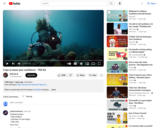
View full lesson: http://ed.ted.com/lessons/3-tips-to-boost-your-confidence-ted-edMade in partnership with the Always #LikeAGirl campaign.When faced with a b...
- Subject:
- Education
- Health Education
- Material Type:
- Other
- Date Added:
- 10/04/2023

View full lesson: http://ed.ted.com/lessons/3-tips-to-boost-your-confidence-ted-edMade in partnership with the Always #LikeAGirl campaign.When faced with a b...
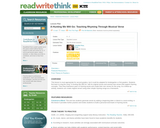
Students learn to sing the song, "A-Hunting We Will Go" with the original verses and learn to sing several new verses that support rhyming concepts. They then brainstorm pairs of rhyming words to create their own verses for the song. As a follow up activity, students can create original verses using other simple rhyming songs as a framework.
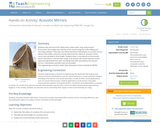
Students play and record the “Mary Had a Little Lamb” song using musical instruments and analyze the intensity of the sound using free audio editing and recording software. Then they use hollow Styrofoam half-spheres as acoustic mirrors (devices that reflect and focus sound), determine the radius of curvature of the mirror and calculate its focal length. Students place a microphone at the acoustic mirror focal point, re-record their songs, and compare the sound intensity on plot spectrums generated from their recordings both with and without the acoustic mirrors. A worksheet and KWL chart are provided.
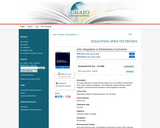
This open textbook was created with the support of an ALG Textbook Transformation Grant. Topics include art integration, music integration, physical education / dance integration, and the theoretical foundations of arts integration in education
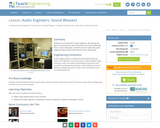
In this lesson, students are introduced to audio engineers. They discover in what type of an environment audio engineers work and exactly what they do on a day-to-day basis. Students come to realize that audio engineers help produce their favorite music and movies.

Designed with inclusivity, cultural relevance, social justice and regional curriculum in mind, these coding & robotics programs are offered free to K-12 classrooms across subject areas.
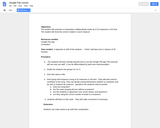
This lesson plan uses Google Flat to teach compostion and collaboration.
This site can be used to build a class song by everyone in the class contributing to the composition. Each student can contribute to the song at the same time or can add notes at a later date. The site is set up like a Google Doc. You can work with the person next to you or someone in a completely differerent location.

A series of progressive composition projects, culminating in a large final projecting, using various types of music hardware and software. Instruction in recording, editing, synthesis, sampling, digital sound processing, sequencing, and interactive systems. Close listening to computer and electronic music from various genres including Varese, Cage, Schaeffer, Xenakis, Lansky, Stockhausen, Tcherepnin, Barlow, Gunter, and Eno. Subject focuses on using the computer as a means of musical creativity and intuition.

This resource is a summative assessment that can be used after a recorder unit where students learn basic note/rest values in 4/4 time, such as whole, half, and quarter notes and rests. Students are asked to review the basics of 4/4 time, such as how many beats may fit into a measure and how many beats notes/rests may receive. Students are asked to review all of the pitches that they've learned on the recorder so far and then fill out a chart stating how many whole, half, or quarter notes/rests may fit into a measure of 4/4 time. Next, students will create an 8 measure recorder composition using all of the pitches they've learned on the recorder so far and whole, half, and quarter notes and rests. Students will walk away from this assignment with a better understanding of how many whole, half, and quarter notes/rests fit into one measure of 4/4 time, using the pitches they've learned on the recorder, therefore reinforcing those concepts as well.

This resource can be used for a lesson working with dynamics as distnaces rather than "volume."

Students learn to apply the principles and concepts associated with energy and the transfer of energy in an engineering context by designing and making musical instruments. They choose from a variety of provided supplies to make instruments capable of producing three different tones. After completing their designs, students explain the energy transfer mechanism in detail and describe how they could make their instruments better.

Examines interactions across the Eurasian continent between Russians, Chinese, Mongolian nomads, and Turkic oasis dwellers during the last millennium and a half. As empires rose and fell, religions, trade, and war flowed back and forth continuously across this vast space. Britain and Russia competed for power over Eurasia in the "Great Game" of geopolitics in the nineteenth century, just as China, Russia, and others did in the twentieth century. Today, the fall of the Soviet Union and China's reforms have opened new opportunities for cultural interaction. Topics include: the religious traditions of Central Asian Islam, Buddhism, Christianity, and Confucianism; caravans and travelers like Marco Polo and Rabban Sauma, the first Chinese to travel to the West; and nomadic conquest and imperialist competition, past and present. Source materials include primary documents, travelogues, films, music, and museum visits.

These 20 Broad General Education lesson plans focus on the creative and collaborative aspects of computational thinking, programming and coding, building girls confidence and resilience by embedding these concepts through interdisciplinary learning into Literacy & English, health and wellbeing, mathematics, sciences, art & design, music, social subjects and physical education.
The resource packs comprise of lesson plans, PowerPoint presentations, video tutorials and website recommendations and provide a wealth of engaging and inspiring learning experiences for teachers to use with their class over a period of a week, a term or over the academic year.
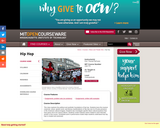
" This class explores the political and aesthetic foundations of hip hop. Students trace the musical, corporeal, visual, spoken word, and literary manifestations of hip hop over its 30 year presence in the American cultural imagery. Students also investigate specific black cultural practices that have given rise to its various idioms. Students create material culture related to each thematic section of the course. Scheduled work in performance studio helps students understand how hip hop is created and assessed."
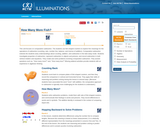
The activities in this 6-lesson unit use fish-shaped crackers to help students develop their understanding of comparative subtraction by exploring five meanings of subtraction (counting, sets, number line, balance, and inverse of addition). Students investigate properties of subtraction, represent subtraction with objects and pictures, record subtraction with vertical notation and equations, create and solve problems, and carry out missing addend activities. Lessons include questions for student discussion and teacher reflection, extensions, printable student sheets, assessment options, and links to online applets.
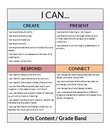
I CAN Statements - Download these copies onto your desktop. The I CAN statements are aligned to the Wisconsin Standards for Music and allow for edits within the document to create classroom, student friendly posters. There are slight variations between the grade bands for formatting to show multiple versions. Feel free to adjust the format to support your classroom.
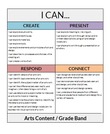
I CAN Statements - Download these copies onto your desktop. The I CAN statements are aligned to the Wisconsin Standards for Music and allow for edits within the document to create classroom, student friendly posters. There are slight variations between the grade bands for formatting to show multiple versions. Feel free to adjust the format to support your classroom.
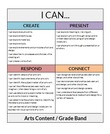
I CAN Statements - Download these copies onto your desktop. The I CAN statements are aligned to the Wisconsin Standards for Music and allow for edits within the document to create classroom, student friendly posters. There are slight variations between the grade bands for formatting to show multiple versions. Feel free to adjust the format to support your classroom.
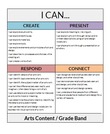
I CAN Statements - Download these copies onto your desktop. The I CAN statements are aligned to the Wisconsin Standards for Music and allow for edits within the document to create classroom, student friendly posters. There are slight variations between the grade bands for formatting to show multiple versions. Feel free to adjust the format to support your classroom.
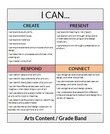
I CAN Statements - Download these copies onto your desktop. The I CAN statements are aligned to the Wisconsin Standards for Music and allow for edits within the document to create classroom, student friendly posters. There are slight variations between the grade bands for formatting to show multiple versions. Feel free to adjust the format to support your classroom.